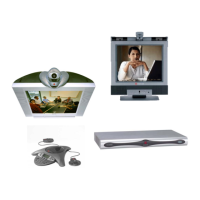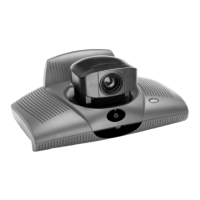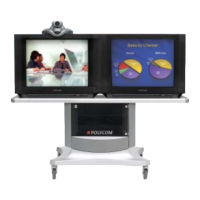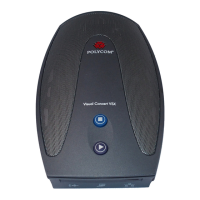TROUBLESHOOTING
© Polycom, Inc. 43 VORTEX EF2280 Reference Manual
Reverberation is not an artifact of the echo canceller. It is mainly affected by
the distance of the microphone from the speech source and by the reso-
nances of the room. While reverberation can be unpleasant, it is not compen-
sated for by the acoustic echo canceller (AEC), which only removes reflections
of remote speech. If the remote end complains that they hear echo, ensure
that they are referring to hearing their own voice and not echoes of local talk-
ers.
You cannot remove the effects of reverberation by changing the EF2280’s set-
tings, but you can minimize reverberation by moving microphones closer to
talkers and, if necessary, adding acoustical treatment to the room.
Finding the
Source of Echo
Try muting one channel at a time to see if the echo that the remote end is
hearing goes away when a particular channel is muted. If you find that the
echo goes away when a particular channel is muted, the microphone may not
be calibrated correctly. Check one or more of the following issues.
Room Gain The most common cause of poor echo cancellation performance is incorrectly
adjusted room gain. This may be explained as follows. The reference signal
for the AEC is sent to a loudspeaker output on the Vortex, where it is ampli-
fied and sent to the room loudspeakers. The loudspeaker audio is coupled
into the room microphones acoustically, through direct and reflected acoustic
paths, and perhaps also through mechanical coupling. The microphone signal
is then amplified and sent to the AEC as the local microphone input signal.
The room gain of a microphone channel refers to the relative levels of the sig-
nal sent to the loudspeaker output (before any amplification) and the level of
Figure 27. Reverberation vs. Acoustic Echo.
AEC
Reverberation
Acoustic Echo

